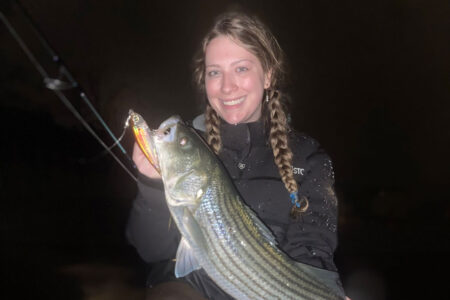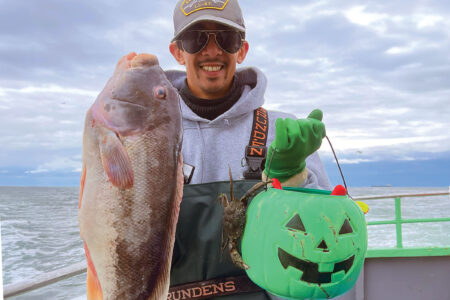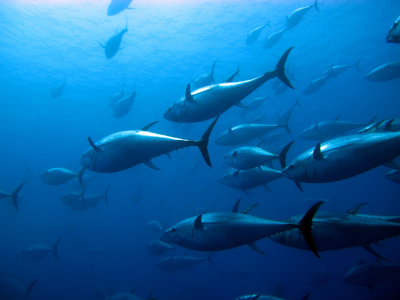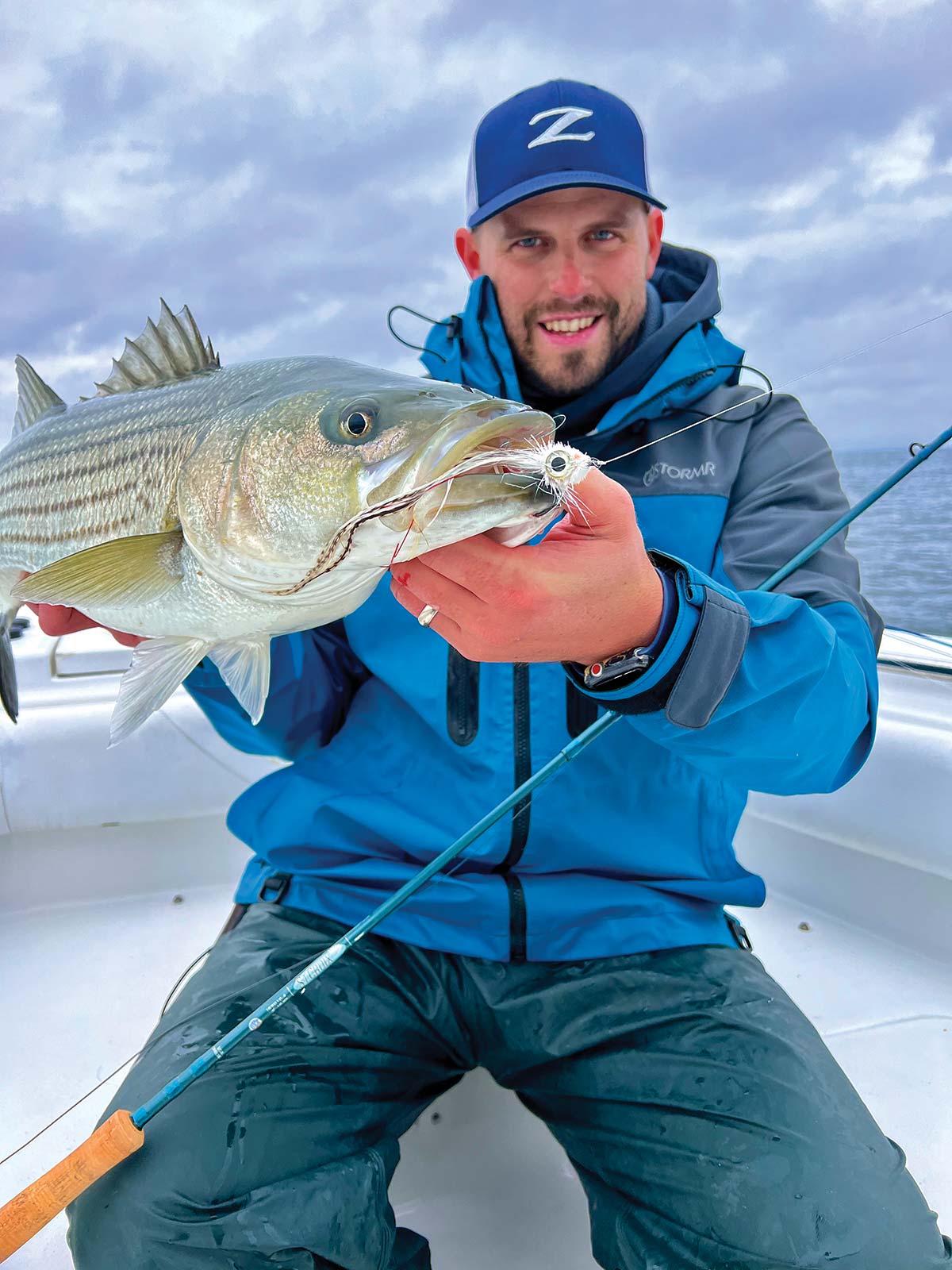
Five of the author’s favorite fall flies and the recipes on tying them.
Every experienced fly fisherman has his favorite fly patterns. They’re flies he can go to again and again with success. Perhaps more importantly, he has confidence in them, and this may well make them even more effective because they’re fished more carefully, with more concentration, and with higher expectations.
With that in mind, here are my favorite flies for stripers in the Northeast. Although some are not as popular as many others that get more press, they’re special to me and have provided me with many wonderful fish and memories over the years. They’ve earned the right to be my “go to” patterns, and if you try them, perhaps they’ll become favorites of yours as well.
They are: 1. Sedotti’s Feather Slammer, 2. Sedotti’s Synthetic Slammer, 3. Flashiceiver, 4. Rabbit Strip Sand Eel, and 5. Flat Wing Sand Eel.
1.) Sedotti’s Feather Slammer
It’s a bunker fly originally tied to copy the menhaden in its immature stage, this fly is usually 5-1/2 to 7-1/2-inches long. It’s tied in the Deceiver tradition, but with significant twists and additions. I added more bucktail clumps (six in total) which run along the hook shank, three each on the top and bottom, this gives the fly a wide profile, with feathers tied in similarly behind this. Everything was tied in strategically to give that fly a very accurate bunker shape, especially for that size menhaden. With all that material undulating in the water, the fly ends up demonstrating a lot of natural movement — quite a fish attractant. Add the natural look of the fly, and the weighted keel, which gives the fly even more action, and you have an unusually stellar fish catcher.
Even though it was originally tied to copy a specific baitfish species at a specific stage, it has turned out to be a great all around fly, both in salt and freshwater. That 6 to 7 inches certainly is a great general size for both. Over the years the Feather Slammer has proven itself as an incredible fly for large trout, too! ! I overwhelmingly like white for fishing salt or freshwater.
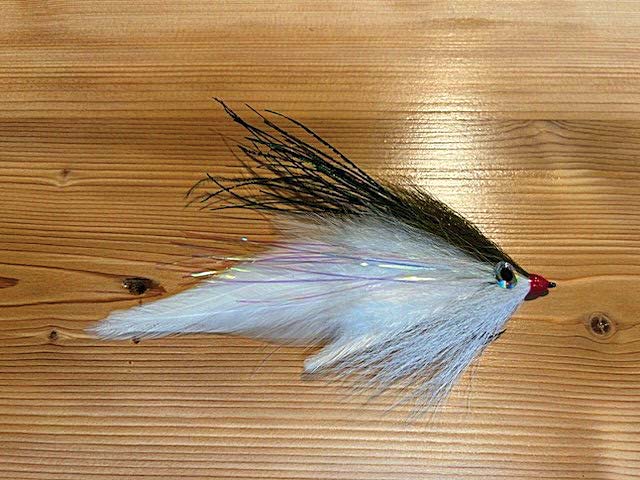
Fly recipe:
-Start with a 2/0 to 4/0 hook
-Wrapped the shank with weighted wire with a weighted keel underneath.
-Use four long saddles as the tail.
-Short saddles (2) in front of the saddle, on top, and on bottom.
-Bucktail clumps ahead of the short saddles with 3 hi tied and 3 low tied.
-Long peacock herl on top before and behind last bucktail clump on top.
-Bucktail and flash on side tied in at front.
-Attach eye if desired.
2.) Sedotti’s Synthetic Slammer
I started tying this in 1991 because I couldn’t find any flies that copied the mature menhaden, (or any size menhaden copied well really) which was 10- to 14-inches long, so I had to create my own. The original 13-1/2-inch creation was made of feathers and bucktail. A few years later I could no longer find the large feathers needed to tie the fly so I switched over to synthetics — Bozo Hair specifically. Now I tie it with Devlin Blends, a combination of Yak Hair and flash, distributed by Capt. Ian Devlin of Norwalk, CT.
The Synthetic Slammer has, to my delight, become a popular fly. Mostly I tie it 11-inches long for stripers because I found that the “starting point” for big bunker is 10-inches. Stripers key in on this, and when bunker are around, will eat a bunker imitation that’s 10 inches or longer far more readily than anything shorter. The fly is created by tying strategic length clumps of Devlin Blends along the entire length of the front hook shank both on top and on bottom (hi tied and lo tied) The longest clump is off the rear on top, with three more shorter clumps situated on top and three along the bottom. Put a little material (but not too much) on the sides tied in in front as well. You can end up with an incredibly accurate fly profile that copies the natural bunker quite closely.
Now, a primary , and important, feature of the Slammer is the weighted shank and big weighted keel positioned below that adds just enough weight so that the fly balances its great wind resistance (because it’s so big) with just enough weight to offset it, resulting in a fly that casts wonderfully, as if it were a much smaller fly. The concept is called weight balancing, and following it makes big flies miraculously castable. It’s actually also the primary reason why any size fly is easily castable with a fly rod too. Castability aside, the weighted keel also functions to keep the big, wide fly from rolling when retrieved, tracking wonderfully straight.
My Synthetic Slammer is most easily handled with a 10 or 11-weight fly rod. Use any type of line, but try to keep the fly in the striper’s zone. As with any streamer fly, make it look alive when fishing it; with the Synthetic Slammer that may mean a good, fast retrieve. Bunker try to “get out of town fast” when a big hungry bass sets its sites on them. Colors I like are white, natural (with a dark top), and yellow.
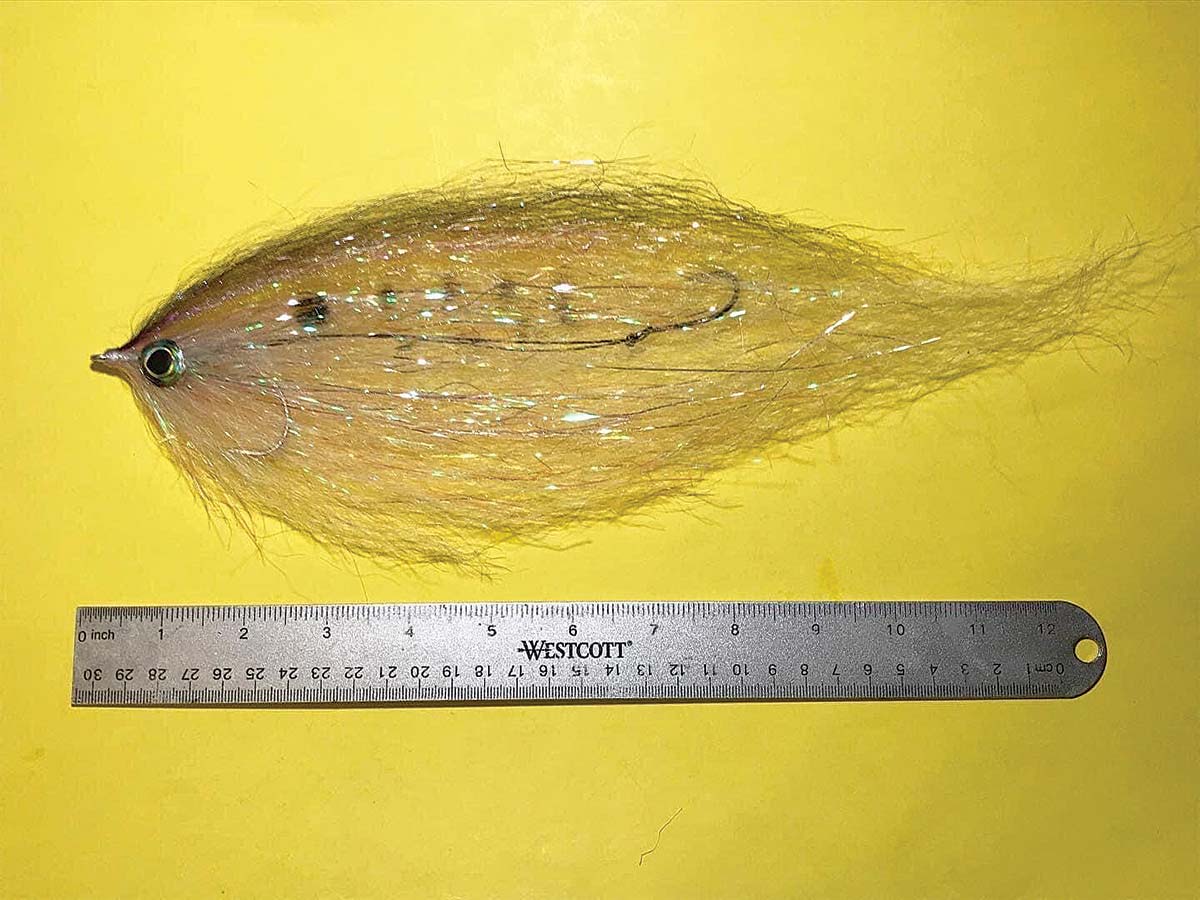
Fly recipe:
-Tie in a long clump of Devlin Blends at the rear of a 5/0 or 6/0 hook.
-Wrap .030 weighted wire around shank.
-Create and tie in weighted keel under this.
-Tie in 3 clumps of Devlin Blends on top and 3 on bottom going up the shank. All in different lengths so that you end up with a creation with the profile of a natural bunker.
-Put a little of the same material on the side (but not too much) to complete a nice copy of the menhaden.
3.) Flashiceiver
This is such a simple fly and it’s so effective. The idea came from iconic fly tyers Bill and Kate Howe from California, who were some of the first (if not the first) to advocate big flies made predominantly of flash. My friend Kevin Callahan, when he just started tying, saw some of Howe’s Flashy Profile Flies and tried to copy one with the few basic materials he had. What he came up with was essentially a 5-inch fly that that substituted pearl Flashabou for the feather tail of a Lefty’s Deceiver. “Eureka” I thought. You’ve got an amazing fly there if you make it 10 inches long! Simple, and will it cast! The easy casting Flashiceiver was born. Again, all you have to do is substitute Flashabou for the feathers of a Deceiver. Tie in bucktail (not too much) on top and bottom right behind the hook eye, and you have it. If you want to put some shorter pieces of flash on the sides, that will be fine too as perhaps this will help with aesthetics.
At 9 or 10 inches it’s an incredible search fly which can be seen from far away in clear water. It just attracts fish, and because all the materials collapse so well when wet and out of the water, it only takes the weight of the hook to balance it, resulting in a big fly that casts like a dream. Use it around bunker or herring and it’s my personal favorite squid imitation. Cast it all over to search for and find fish. Add a weighted eye behind the hook eye (it’ll still cast well) and you’ll have a jigging action on retrieve that will have those long strands of flash just rippling seductively. If you’re intimidated by casting big flies, this one’s for you. You will not have a problem and you can use this fly with a lighter weight rod, too. This fly doesn’t have the following that it should but it is an incredible bait, and it’s so simple to tie too. I’ve caught giant blues, big lake trout, big pike, and Chinook salmon on it, as well as stripers big and small.
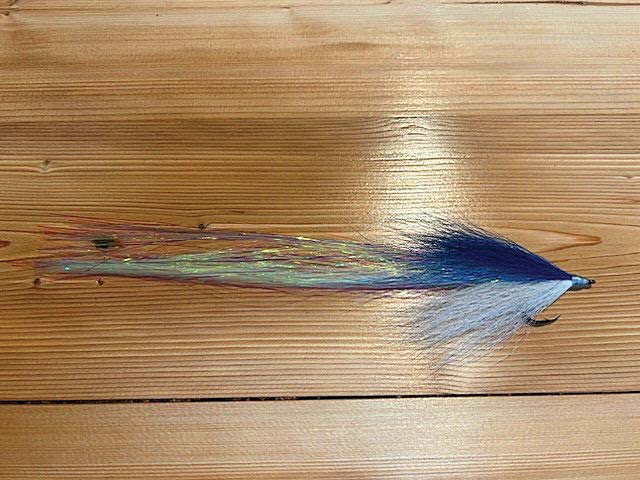
Fly recipe:
-4/0 hook
-Small clump of white bucktail off rear of hook shank.
-Clump of 8- or 9-inch long regular Flashabou over this on rear of hook shank.
-Clump of white bucktail right behind hook eye on bottom.
-Clump of olive or blue bucktail in back of hook eye on top.
-Some shorter strands of Flashabou tied in on sides between front bucktail.
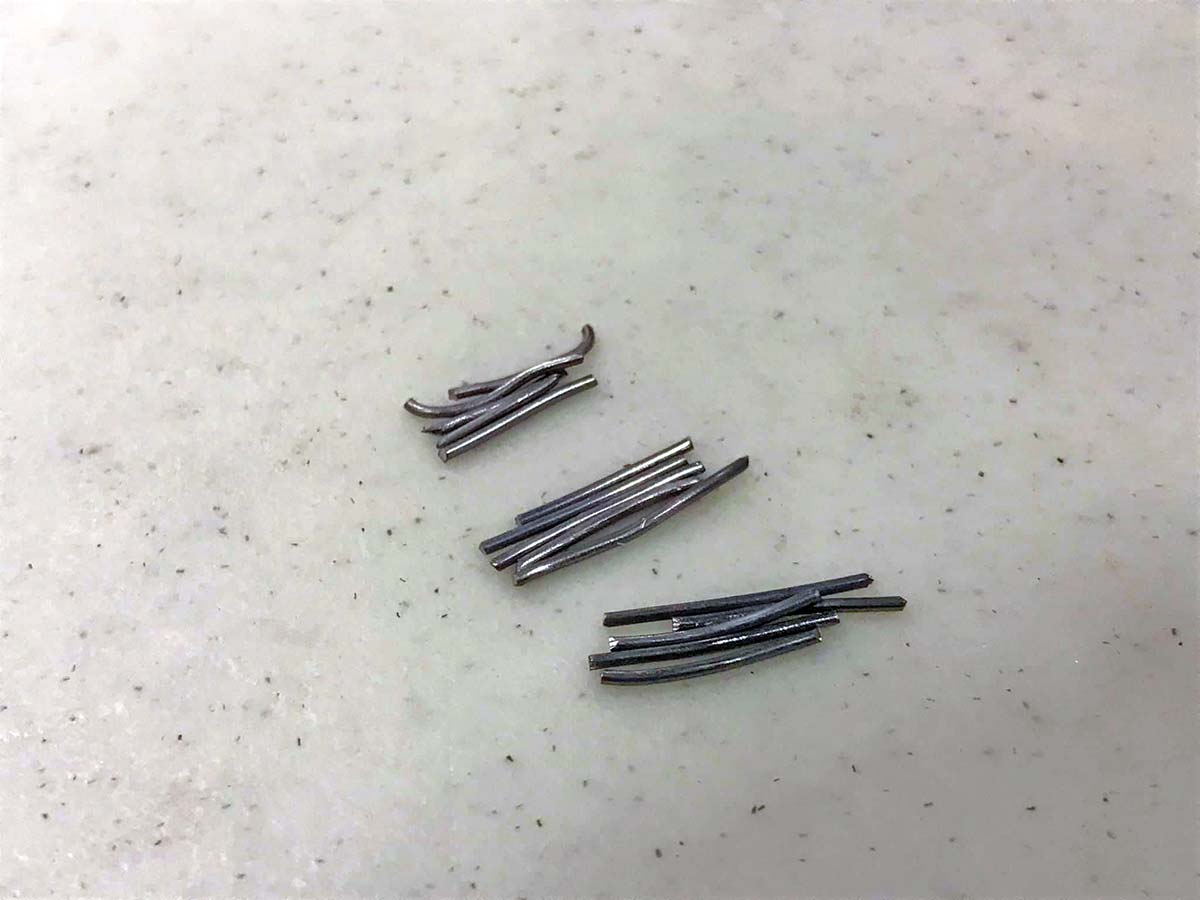
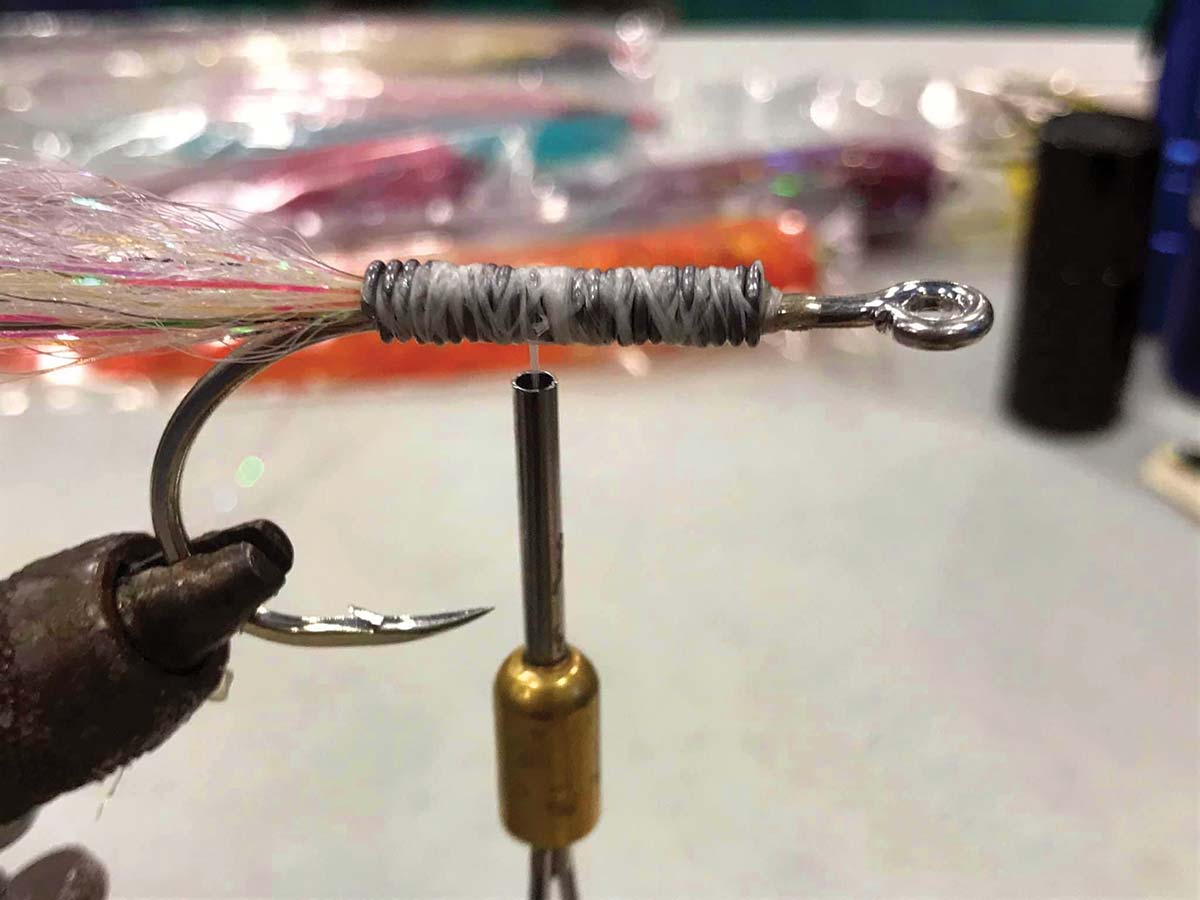
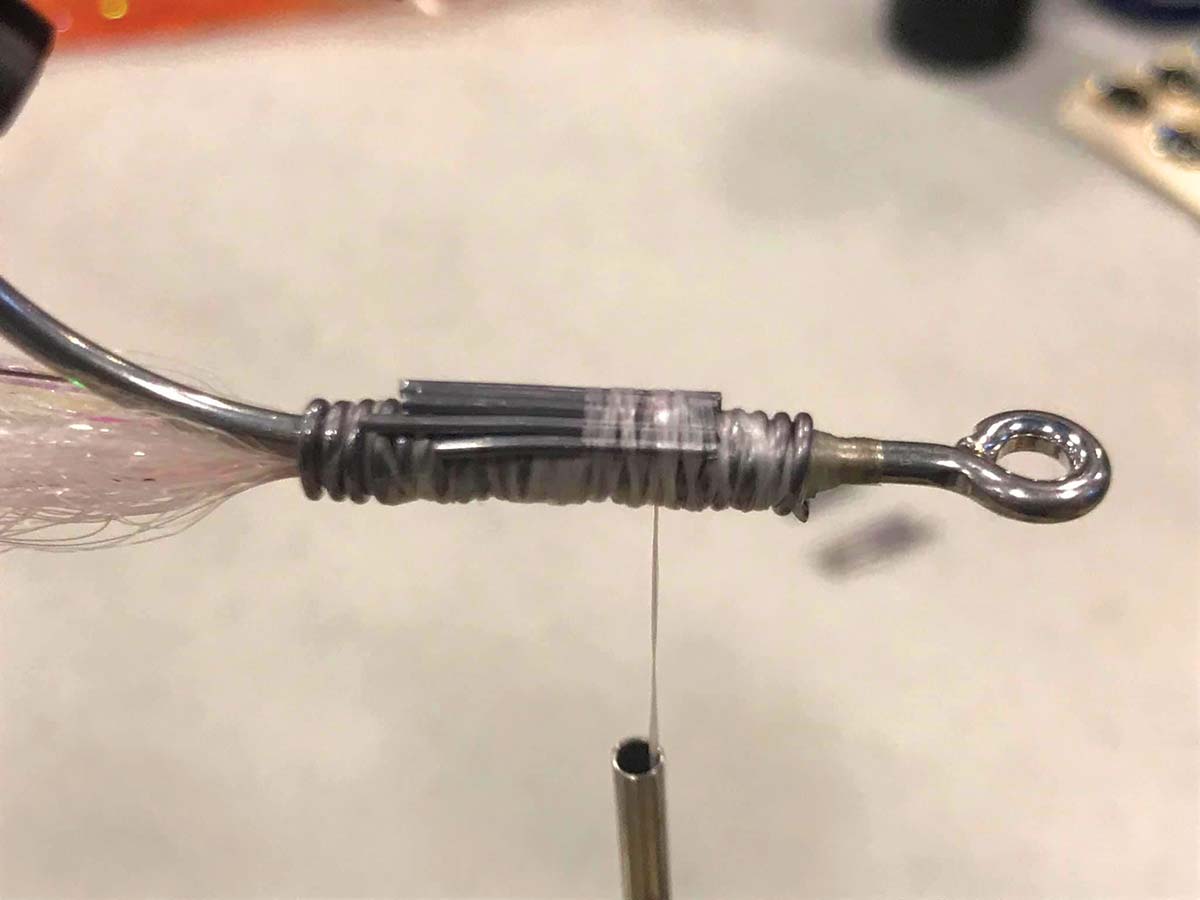
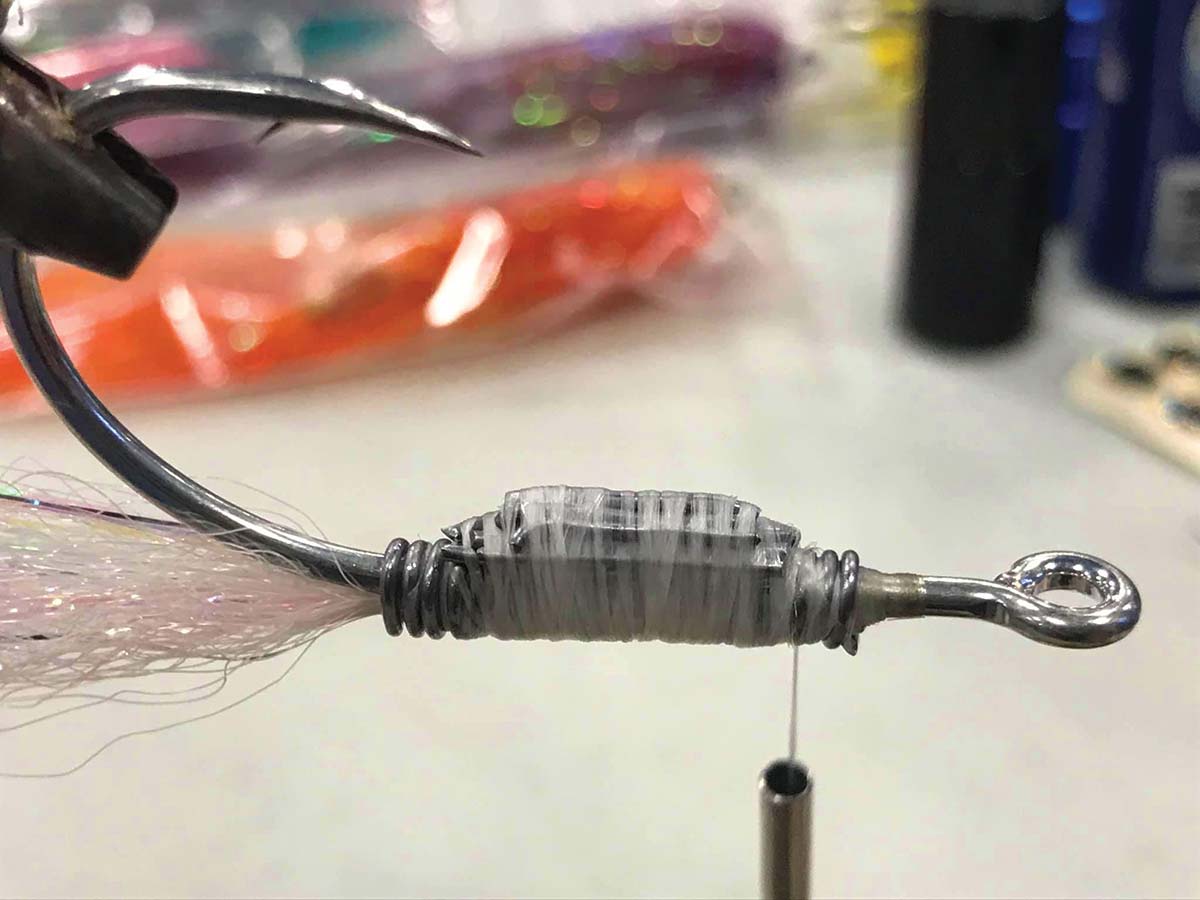
4.) Rabbit Strip Sand Eel
Talk about stupid easy! Neanderthal basic? How about one of my favorite sand eel imitations, the Rabbit Strip Sand Eel. It catches very selective fish, and it’s just a 3-1/2-inch rabbit strip on a hook. That’s it. Just tie that rabbit in along the top of a size 1 or 1/0 hook shank. That’s it! In white or olive, or maybe chartreuse, too. Cast it out and retrieve straight. Those countless hairs on that hide along the strip do their seductive work. Try it in red or tan (or black) for use as a great cinder worm fly too. It will probably work as well as a “Palolo” Worm for tarpon, too.
Simple rabbit strip flies in general, with just rabbit solo (and nothing else added) or the rabbit strip with tungsten weight at the head (which is the Rabbit Strip Jiggy) are, when all is said and done, some of the best flies going, in fresh or salt. This really is some fish catchin’ material!
Fly Recipe:
-1/0 or size 1 hook
-Tie in 3-1/2 inch of rabbit (zonker) strip along complete top of shank so strip (and fly) is straight.
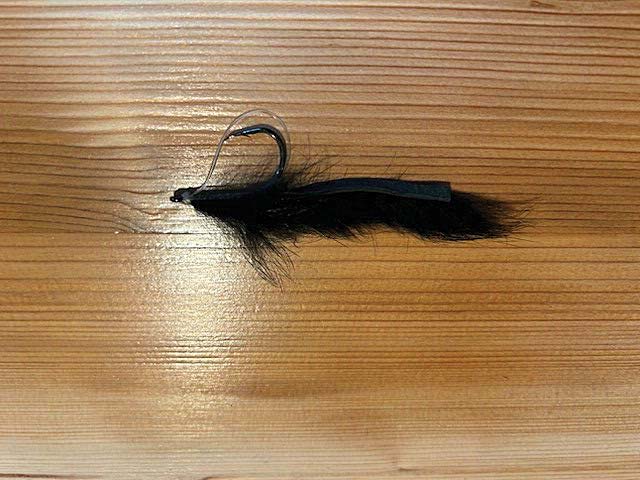
5.) Sand Eel Flatwing
Favorite fly #5 is a Northeast classic and an iconic sand eel imitation, the Sand Eel Flatwing. This pattern, created with long, narrow saddle hackles tied in flat (sides facing up) at the rear (hence the name) and sparse bucktail at the head, and tied to match the length of the sand eels the fish are feeding on. It’s also a great fly when stripers are really being finicky. This fly casts very well and I like it in natural colors, say olive, white, or tan (or a combination of these).
Usually a straight retrieve, either stripping one-handed or hand-over-hand works well. I like using finely-crafted Sand Eel Flatwings tied by Michael Ozkaya of Long Island Flies. They really catch fish. Additional ways to retrieve are with pauses and twitches, letting the fly swing on a tight line, or even allowing it to drift free with the currents. It has great action no matter how you use it.

Fly Recipe:
– #1 to 3/0 hook depending on size of fly
– Flatwings (long, thin saddle hackles) off rear of the hook shank.
– Add some sparse strands of bucktail on top and bottom right behind hook eye.
– Optionally add some flash in the fly.

